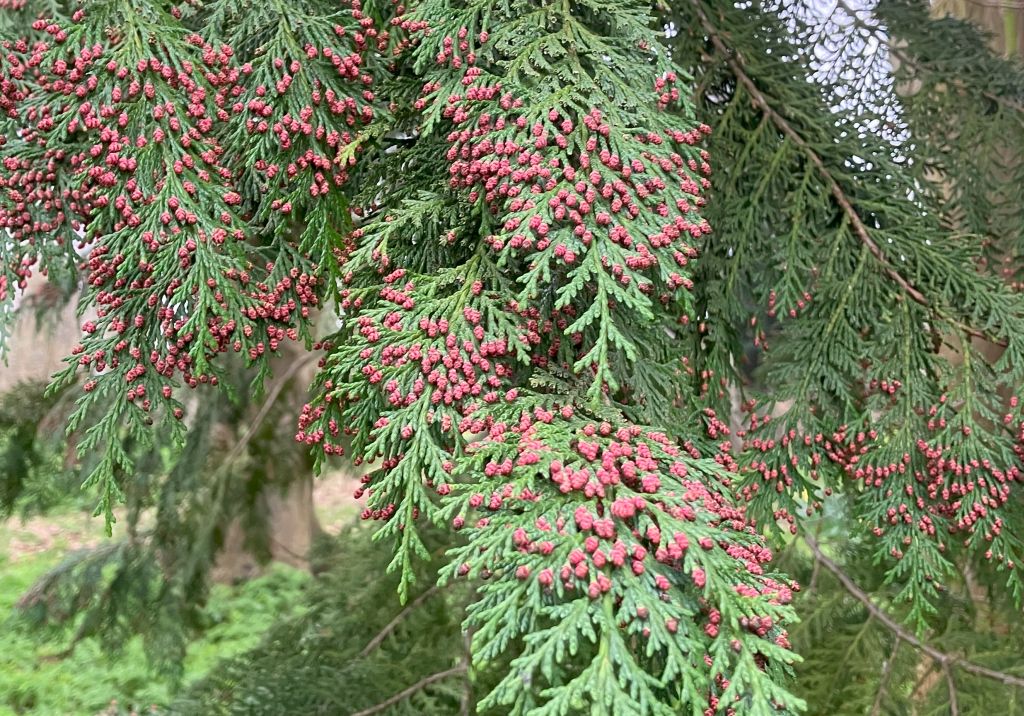#32 LAWSON'S CYPRESS
Chamaecyparis lawsoniana

Planted: 1912
At the top of the East Walk, in the American Section.
| Distribution: | Native to sout-west Oregon and north-western California from sea level to 1,500 m. In the valleys of the Kalamath Mountains, often along streams. |
| Planting Date: | Purchased by Captain Chaplin in 1912 as Chamaecyparis lawsoniana ‘Alumnii’, a dwarf form. |
| Growth Habit: | A large evergreen tree. Old specimens lack branches near the base and often have dead tops. They can live up to about 600 years of age. |
| Bark: | Silver-brown, vertically furrowed, and 15 to 25 cm thick near the base. |
| Leaf: | Arranged in lacy, flat sprays with a feathery appearance, usually somewhat glaucous (blue-green) in colour. Scale-like, 3 to 5 mm long, with narrow white markings on the underside, on somewhat flattened shoots. Gives off a pungent scent; not unlike parsley. |
| Flowers: | Minute flowers, which look like buds, open at the twig tips in spring. Male flowers are crimson, becoming yellow with pollen, and females are blue. |
| Fruit: | Cones are globose, 7 to 14 mm in diameter, with 6 to 10 scales. Green at first, maturing brown in early autumn; 6 to 8 months after pollination. The male cones are 3 to 4 mm long, dark red, turning brown after pollen release in early spring. The seeds fall quickly and can float on water. |
| Toxicity: | The sap can irritate the skin and mucous membranes upon contact. Poisonous to humans. |
| Potential tree size: | Up to 6 m, or more, with trunks 3.8 to 6.3 m girth, exceptionally 8.5m. |
| Uses: | Wood is light yet has great strength and rot resistance, even after long exposure to salt water. Considered more than acceptable for use in stringed instruments. Large amounts exported from the U.S. to Japan where it is used in making coffins, shrines, and temples. Extracted oil has been used as an insecticide. |
| Plant Hunter: | First discovered near near Port Orford in Oregon, and introduced into cultivation by seed collectors working for Lawson & Son Nursery, Edinburgh, Scotland. Named after Charles Lawson (1795-1873) by the botanist Andrew Murry. In the U.S. it is officially called Port Orford cedar. |
| Introduction Date: | 1854 |
| Anecdotes and Comments: | Several hundred named cultivars of varying crown shape, growth rates and foliage color have been selected for planting in parks and gardens. In the UK 24 have gained an Award of Garden Merit from the Royal Horticultural Society. Purchased as Chamaecyparis lawsoniana ‘Alumnii’ which is a dwarf form. |